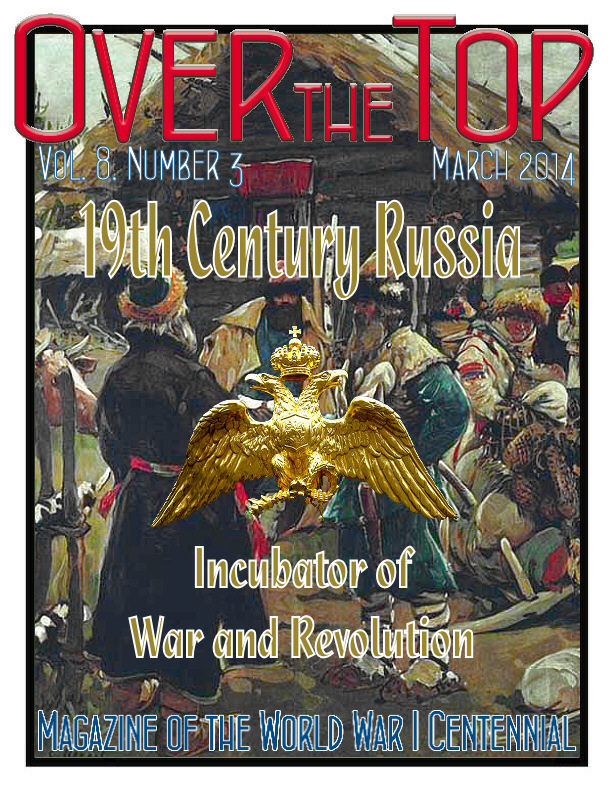
News Bulletin!
U.S. National Commission Announces WWI Memorial Recommendations
March 2014 |
 |
|


Big Advances for America's Centennial Commemoration
In this issue of the Trip-Wire we are pleased to announce two major initiatives in the effort to build interest and enthusiasm for the commemoration of America's sacrifices during the Great War. Full articles about each can be viewed on page 2 below, but let me summarize them here. First, after looking at all the options and feasibility at different locations, the National Centennial Commission has decided to recommend to Congress the construction of a National World War One Memorial at Pershing Park in Washington, DC, and also the designation of the Liberty Tower at Kansas City's Liberty Memorial, site of the National World War One Museum, as another National Memorial. This approach has the double benefit of having a memorial in the Nation's capital and recognizing the great contribution of the Liberty Memorial in keeping alive the memory of what many believe is a forgotten war for nearly a century.
Second, we are also lending our full support in this issue to another outstanding Centennial effort: the restoration of the Lafayette Escadrille Memorial outside of Paris. The story of these volunteers, who flew for France, is moving by itself, a part of American history and that of the U.S. Air Force, and is one of those legendary sagas that has the potential for getting young people interested in their history. When you read the article below, you will be able to download the project's beautiful brochure.
Needless to say, we want to encourage your support for these programs. Both, however, will require substantial nongovernmental financial help and this fund raising needs to begin now.
The St. Mihiel Trip-Wire is pledging $100 to each of these efforts. Please join us to make this happen. More information on making contributions will be found in the articles.
I have had some inquires as to why some World War I organizations are not listed on page 2 in our "U.S. Centennial Organizations & Resources" area. I thought that title was self-evident. As our regular readers know, I have dedicated all my publishing outlets to support the centennial. My intention is to concentrate on those groups with specific Centennial programs with fresh approaches outreach, fund raising, and building awareness with the general public, especially young people. If you have such a program you would like me to consider adding, please send me a summary of your goals and projects. (Email)
MH

|
2014
 Western Front Association Spring WWI History Symposium: "First Centenary Program," Maryland War Memorial, Baltimore, Sat. 7 June 2014 Download Event Flyer. Western Front Association Spring WWI History Symposium: "First Centenary Program," Maryland War Memorial, Baltimore, Sat. 7 June 2014 Download Event Flyer.
 West Point Announces First World War Conference: "Literature, Memory, and the First World War," 11-14 September 2014 Details, Registration, and Call for Papers. West Point Announces First World War Conference: "Literature, Memory, and the First World War," 11-14 September 2014 Details, Registration, and Call for Papers.
 New York State Military Museum, "Fiery Trial and Sacrifice - New York and the First World War," ongoing exhibit, Saratoga Springs, NY. Virtual Tour. New York State Military Museum, "Fiery Trial and Sacrifice - New York and the First World War," ongoing exhibit, Saratoga Springs, NY. Virtual Tour.
 The National World War I Museum in Kansas City, MO, has a current exhibit running on "The Road to War," running through April 2014. Website. The National World War I Museum in Kansas City, MO, has a current exhibit running on "The Road to War," running through April 2014. Website.
 The MacArthur Memorial and Museum in Norfolk, VA: (1) Exhibit — "The 42nd 'Rainbow' Division in World War One," through September 2014; (2) Symposium — 14-15 November 2014, 10:00 a.m.-5:00 p.m., "World War I Centennial;" Free and Open to the public. More details to follow. Website. The MacArthur Memorial and Museum in Norfolk, VA: (1) Exhibit — "The 42nd 'Rainbow' Division in World War One," through September 2014; (2) Symposium — 14-15 November 2014, 10:00 a.m.-5:00 p.m., "World War I Centennial;" Free and Open to the public. More details to follow. Website.
 The U.S. Air Force National Museum at Wright-Patterson AFB, OH, and the League of WWI Aviation Historians (OvertheFront.com), are collaborating on what will be the first U.S.-based mega-event for the WWI centennial. The League is scheduling its 2014 Seminar to correspond with the WWI Dawn Patrol Fly-In at the Museum in Dayton, OH, 24-28 September 2014. Mark it down on your calendar. The U.S. Air Force National Museum at Wright-Patterson AFB, OH, and the League of WWI Aviation Historians (OvertheFront.com), are collaborating on what will be the first U.S.-based mega-event for the WWI centennial. The League is scheduling its 2014 Seminar to correspond with the WWI Dawn Patrol Fly-In at the Museum in Dayton, OH, 24-28 September 2014. Mark it down on your calendar.

An interesting discovery from regular contributor Sidney Clarke. This is the grave of an American Volunteer with the Canadian Army, Leland Wingate Fernald of Dover, New Hampshire. It is located at Lijssenthoek, Belgium, southwest of Ypres. Note the unique inscription: "A Volunteer from the U.S.A. to Avenge the Lusitania Murder." Wingate
died one year and one day after the sinking of the Lusitania.
|
|
Remembering the
Lafayette Escadrille
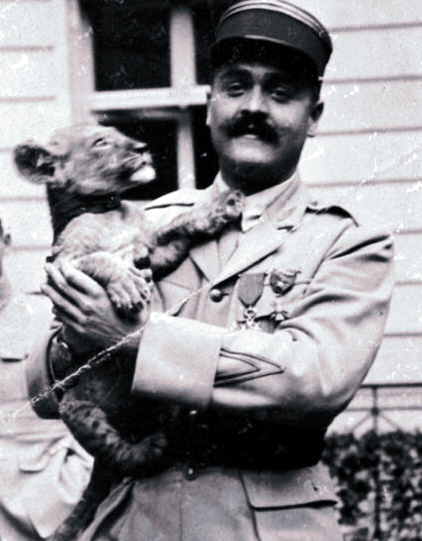
Ace William Thaw of the Lafayette Escadrille and
U.S. Air Service with Mascot Whiskey
Read below on page 2 about how you can participate in a centennial effort to commemorate the service of those Americans who flew with the Lafayette Escadrille.

The American Military Before the Great War
Every history of the Great War mentions how small the American Army was in April 1917
when the nation joined the European War. However, since 1898, when its elites and political leaders decided the U.S. should become a world power, marines and soldiers had been fighting or manning garrisons from China to the Caribbean. The fleet was showcased in a world cruise, and was building more dreadnoughts as war approached. The Wilson administration's fixation on Mexico led to two interventions that had the incidental benefit of alerting the nation to organizational deficiencies, should the need arise to join the battles in Europe and mobilize a huge expeditionary force.
 From the Library of Congress: The Spanish-American War
From the Library of Congress: The Spanish-American War
 From the Museum of American History: The Spanish American War
From the Museum of American History: The Spanish American War
 Elihu Root and the Reforming of the Army
Elihu Root and the Reforming of the Army
 From the Department of State: The Philippine Insurrection, 1899-1902
From the Department of State: The Philippine Insurrection, 1899-1902
 Pacifying the Moros, 1899-1913 (pdf download)
Pacifying the Moros, 1899-1913 (pdf download)
 Voyage of the Great White Fleet
Voyage of the Great White Fleet
 War Correspondent Jack London on the 1914 Vera Cruz Expedition
War Correspondent Jack London on the 1914 Vera Cruz Expedition
 Chronology of U.S. Marine Corps Operations (See early 1900s section)
Chronology of U.S. Marine Corps Operations (See early 1900s section)
 From the National Archives: The Mexican Punitive Expedition
From the National Archives: The Mexican Punitive Expedition

Where Is This Impressive German Trench Diorama?
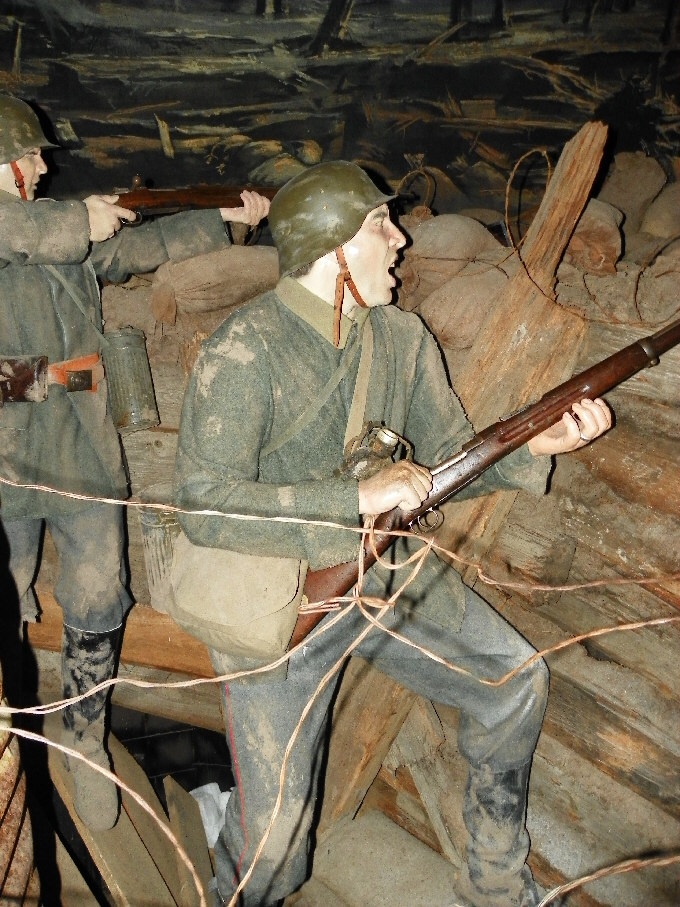
The diorama is a feature at the Fantasy of Flight Museum in Polk City, Florida. Soaring over the trench are aircraft from the museum's World War I collection. Visit their site for a preview: Website

Mangin's Return from Disfavor
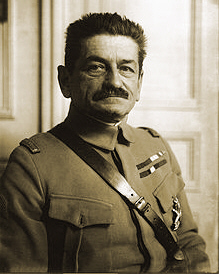
General Charles Mangin
The fourth German spring offensive of 1918 was launched on 9 June west of Soissons. It began successfully enough, gaining six miles on the first day. General Charles Mangin, in disgrace after the French failure on the Chemin des Dames and the ensuing mutinies of the previous year, had been placed on the shelf. In desperation, however, he was given command of XXXV Corps to slow down the German advance on 10 June. He ordered a counterattack for the next morning that succeeded sufficiently to cause Ludendorff to call off his offensive as a failure by its fifth day. Mangin was back. He was quickly given command of the combined French-American force that led the offensive phase of the Second Battle of the Marne. His aggressiveness would prove to be tremendously valuable for the remainder of the 1918 campaign.

The Forest of the Dead
With loving or unloving eye
Kinsman and alien pass them by:
Do the dead know, do the dead care,
Under the forest as they lie?
Capt. J. Griffyth Fairfax, R.A.S.C.
|

|

U.S. Centennial Organizations & Resources
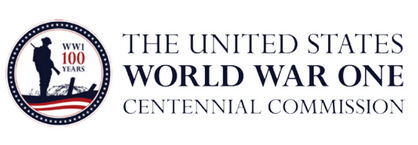
worldwar-1centennial.org/
|
U.S. Centennial Commission Announces National Memorial Recommendations
The United States World War One Centennial Commission has just released its ambitious Strategic Plan. It has many dimensions — a program of national conferences, legislative recommendations, educational activities, major commemorative events, web-based resources, outreach efforts, and fund raising — which we will be covering over the next several months.
However, one major aspect of the Strategic Plan is big news:
"The Commission will ask Congress to authorize a national World War I Memorial at Pershing Park in Washington DC, and to designate the Liberty Tower in Kansas City, Missouri as a national World War I memorial."

Dedication, Liberty Memorial, Kansas City, MO
In an exclusive interview, Commission Chairman Robert Dalessandro told the editor the timing for formally submitting the recommendation to Congress is still to be determined. He added, "Adopting the Strategic Plan was a major step forward for the Commission. Now our real work begins. We must mobilize the organizations and individuals across the nation with an interest in WWI and focus their efforts in support of our national goals. For example, on June 14 2014, in Washington, DC, the Commission will host our first WWI Centennial Trade Fair as a forum and networking opportunity toward this end."
Chairman Dalessandro added that financial contributions from individuals, businesses, and organizations will be needed to make the new national memorial in Washington come about and this can start now. You can support by giving to the U.S. Foundation for the Commemoration of the World Wars and designate the gift to the memorial. The Address is: Room 123, 701 Pennsylvania Ave, NW, Washington, DC, 20004.
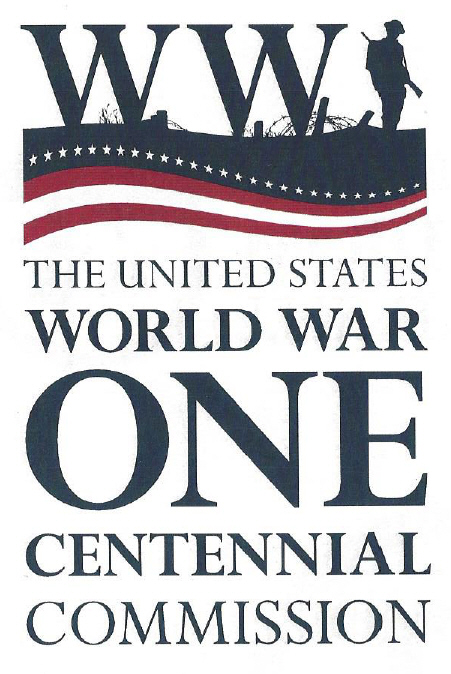
Postscript: In parallel with unveiling their Strategic Plan the Commission has also shared their new graphics program. Above is the Commission's new logo and atop the column to the left you will see their new stationery header that works well for us as a link icon. These designs appear to us to successfully give the traditional Great War icons an American feel and express the mission of the commission. Well done.
Lafayette Escadrille Memorial Restoration
One the greatest traditions of the First World War is the story of the Lafayette Escadrille, the French aero-squadron composed of American pilots who chose to come to the aid of France at the height of the fighting. Afterward, their service was honored with a beautiful memorial (pictured below) located just outside Paris. Within this monument lie the remains of America's first combat airmen - individuals who answered the call to fly and fight in the name of freedom, not because they had to, but because it was the right thing to do.
As part of the Centennial Commemoration of the War, the American Battle Monuments Commission plans a $14 million restoration of this great memorial which will require private funding. A group of volunteers has been organized to encourage the fund raising effort. The program and information on how you can personally support this important project are described in a brochure in PDF format that you can download right now. Just click on the image of the monument below.
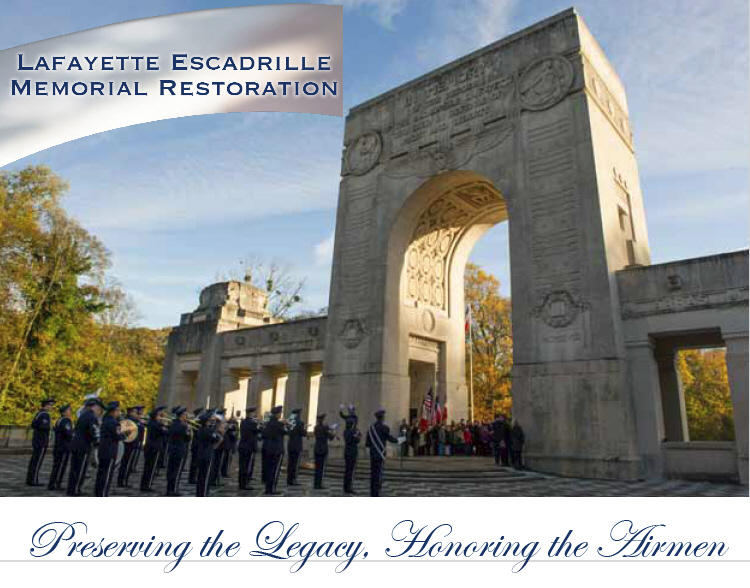
Click on Image to Download Brochure
Centennial News Items:
 Dennis Skupinski at Michigan's WWI Centennial Project has produced another great video on radio pioneer General Owen Squier. It is now available on YouTube (Link).
Dennis Skupinski at Michigan's WWI Centennial Project has produced another great video on radio pioneer General Owen Squier. It is now available on YouTube (Link).
 Mark Levitch and his WWI Memorial Inventory Project has caught the attention of the Washington Post (Link).
Mark Levitch and his WWI Memorial Inventory Project has caught the attention of the Washington Post (Link).
 Our own Great War Local Histories Project has started well after our shout out last month. Last month, I had not yet decided where these would be published. Since then I have concluded that our Doughboy Center Website — being revamped during 2014 — will have a "Homefront" section added. That's where we will be placing these articles. Four local histories have been submitted thus far:
Our own Great War Local Histories Project has started well after our shout out last month. Last month, I had not yet decided where these would be published. Since then I have concluded that our Doughboy Center Website — being revamped during 2014 — will have a "Homefront" section added. That's where we will be placing these articles. Four local histories have been submitted thus far:
Paso Robles, CA
Wilson County, NC
Belmont, MA
Chicago, IL
Let Us Help Publicize Your Local WWI Events & Researh!
(Email the Editor)
|
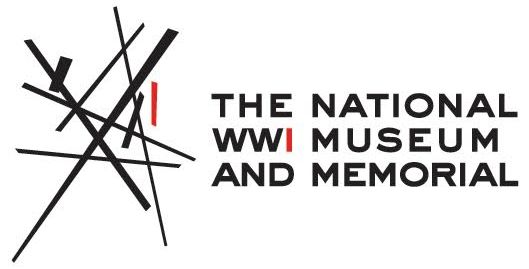
theworldwar.org/
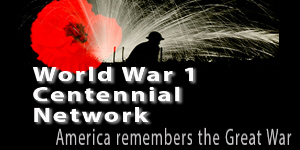
www.ww1-centennial.org/

history.army.mil/
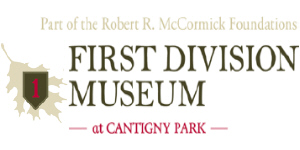
www.firstdivisionmuseum.org/

www.abmc.gov/
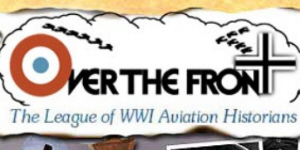
www.overthefront.com/

www.nationalmuseum.af.mil/
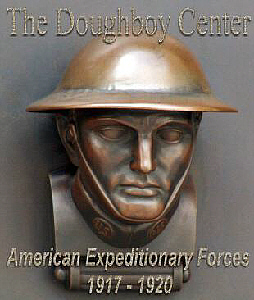
www.worldwar1.com/dbc/
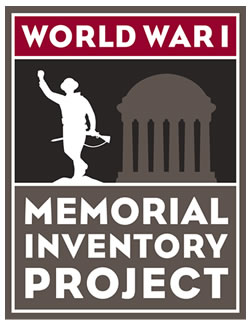
wwi-inventory.org/

wisconsinhistory.org/

www.uswarmemorials.org/

www.macarthurmemorial.org/
|
|

March 1914
Antonio Salandra Becomes Italy's Prime Minister
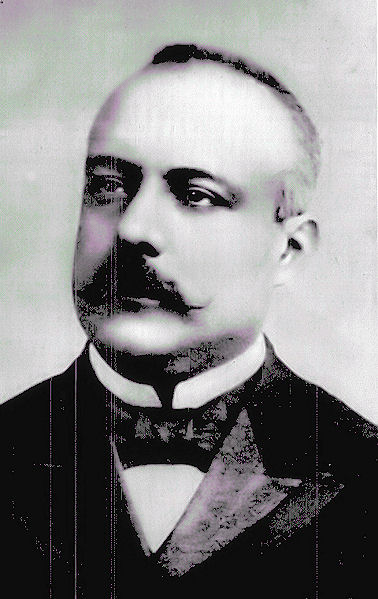
Antonio Salandra |
Roiling Italian politics brought conservative, traditionalist Antonio Salandra to the top of the heap in March 1914. He was a nationalist who favored a foreign policy that suited Italian interests, and was in no way an enthusiast for the Triple Alliance with Germany and Austria-Hungary. His appointment, which was considered a stopgap measure at the time, would prove to be highly influential on the course of the war.
When the rest of Europe rushed toward the battlefields, Prime Minister Salandra announced that Italy would not be entering the war, claiming that the terms of the 1882 Triple Alliance Treaty did not apply because neither Austria-Hungary or Germany were attacked. As a practical matter, there was substantial opposition to the war in Italy and any territory that Italy hoped to gain was in Austrian hands rather than those of the Entente powers. The Germans and Austrians were furious, of course, feeling betrayed. But worse was to come for the Central Powers.
Excellent Details on
Salandra's maneuvering.
|
|
Salandra and his Minister of Foreign Affairs, Sidney Sonnino (initially a supporter of honoring the Triple Alliance), continued discussion with their purported allies, while also initiating secret negotiations with London and Paris to see how Italy could profit from the war by joining their side. The Allies won the bidding war, and Salandra patched together a broad, but somewhat thin, coalition from across the Socialist-Nationalist spectrum to support entering the war on the side of the Entente. Italy joined the war against its former Allies in the spring of 1915.
Salandra, however, did not get the war he intended. The Army high command seized control of the war effort and suffered enormous casualties by mounting huge offensives across the Isonzo River with very little to show for it. Little more than a year after Italy had entered the war, Salandra's government lost support and fell, the first such dismissal for any World War I belligerent. The war that Salandra had engineered would be a disaster for Italy, but the fighting on the Italian Front would be a steady drain on the resources of the Central Powers, especially Austria-Hungary, and would contribute immeasurably to the eventual Allied victory.
Sources: Giolitti, Giovanni. In Great Britain, Collected Diplomatic Correspondence
|
|

Flyers and application form for 2014 "Opening Moves" and
"Miracle of the Marne" Trips Now Available
(download pdf file here)

Click on Image to Send Email
|
|
|

|

The Editors Recommend
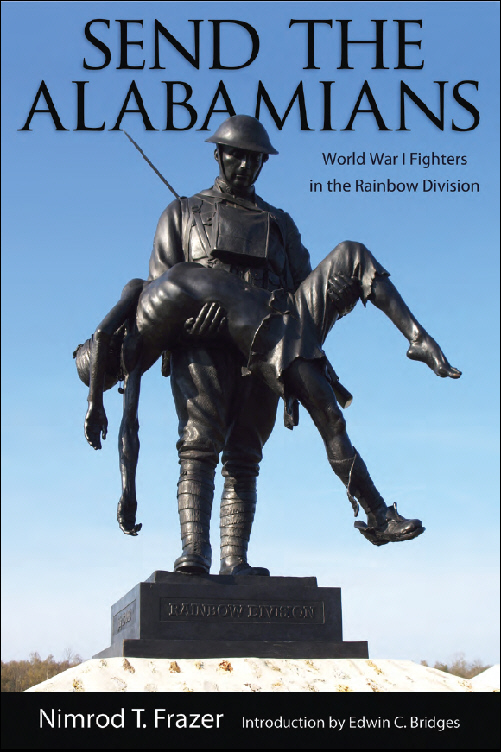

The forthcoming Send the Alabamians (May 2014) recounts the story of the 167th Infantry Regiment of the 42nd Rainbow Division from their recruitment to their valiant service on the bloody fields of northern France in the climactic final months of World War I.
Written to mark the centennial of World War I, Send the Alabamians author Nimrod Fraser tells the remarkable story of a division of Alabama recruits whose service Douglas MacArthur observed had not “been surpassed in military history.” The book borrows its title from a quip by American General Edward H. Plummer, who commanded the young men during the inauspicious early days of their service. Impressed with their ferocity and esprit de corps but exasperated by their rambunctiousness, Plummer reportedly exclaimed:
In time of war, send me all the Alabamians you can get, but in
time of peace, for Lord’s sake, send them to somebody else!
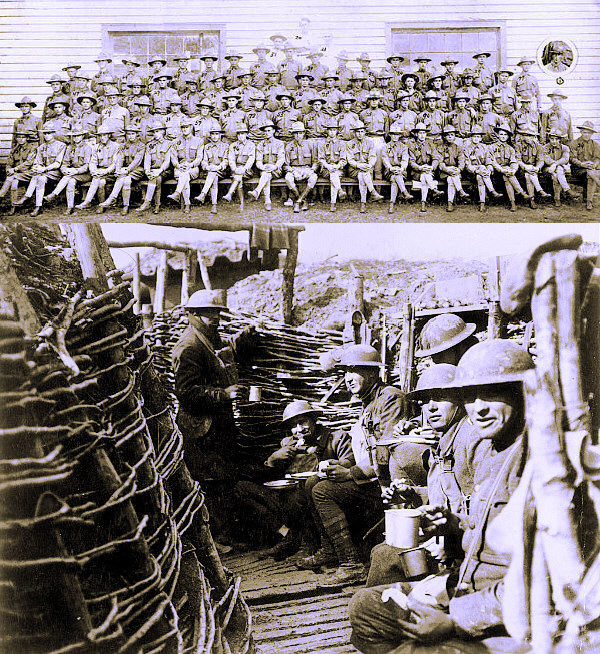
Alabamians During Training and in the Trenches
The ferocity of the Alabamians, so apt to get them in trouble at home, proved invaluable in the field. In its most memorable action the 167th, with its sister regiment in the 84th Brigade, the 168th (Iowa) on its right flank, led the Rainbow Division push into a great battle at Croix Rouge Farm on 26 July 1918. There the Alabama regiment lost 162 killed, including three lieutenants and two captains, who were company commanders. More than 1,000 from the 167th were wounded. But their victory forced the Germans to retreat to positions on the east of the Ourcq River, about six miles from the Croix Rouge Farm. The cover image shown above is the new monument at the farm honoring the achievement of the men from Alabama.
|

A Mission for the Cavalry
Convoying Prisoners
|
Anyone who has seen a police horse approach a crowd knows how intimidating a large equine with an armed rider can be, even to an energized group of people. The rider also has a great view of anyone or anything at ground level, and foot-bound individuals are further paralyzed by the knowledge that flight is futile since you can't outrun a horse. During the war, when the armies still contained plentiful cavalry units, they were natural candidates for the job of marching large bodies of prisoners off the battlefield. Also, after the deadlock occurred on the Western Front something was needed to keep the mounted forces active. In the several views below, the most interesting is the one in the lower right. Note the large ratio of German prisoners to the small number of mounted Moroccan Spahis.
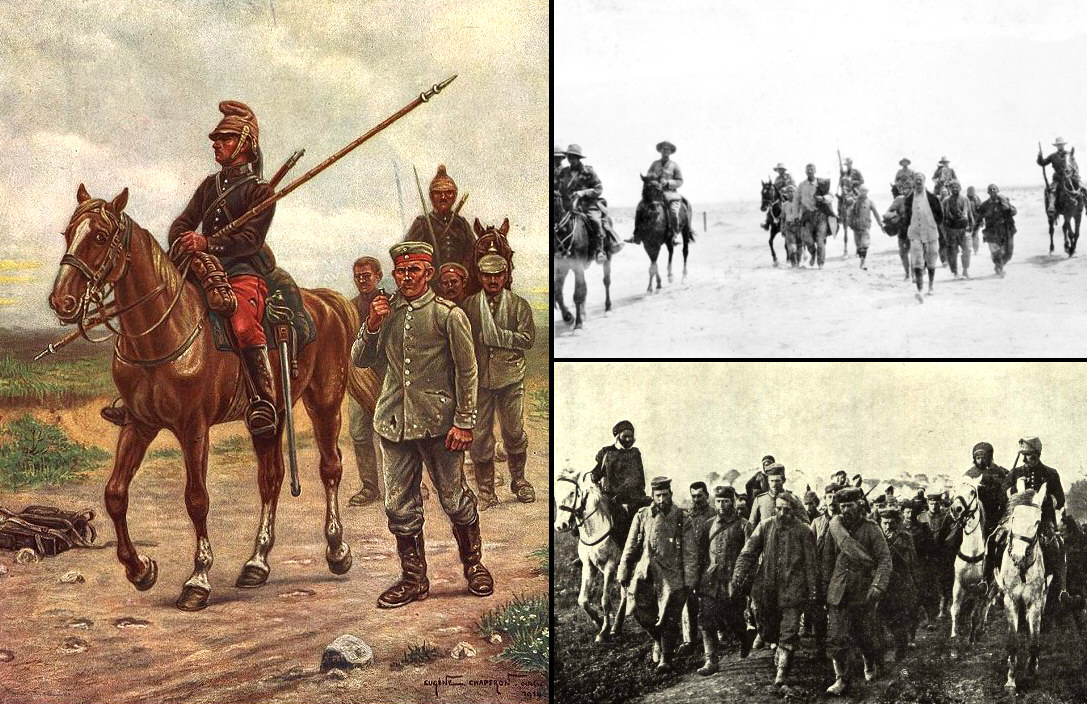
H55>
|
|
|

Fort de Leveau
and the Siege of Maubeuge
In 1914 Fort de Leveau in Feignies was one of eleven fortified positions that constituted perimeter defenses of the fortified town of Maubeuge, a key defensive position on the Franco-Belgian border. Maubeuge was also of strategic importance because it was at the intersection of the Brussels and Liège railways that ran to Paris. The surrounding forts were designed by the military engineer General Séré de Rivières after the war of 1870-1871. Mauberge was originally built within the walls of a Vauban-designed citadel, but by 1914 had expanded beyond them.

The Partly-Restored Fort Today
On 27 August 1914 60,000 German troops besieged Maubeuge. The following day their artillery began bombarding the various fortified outworks which one by one were flattened by the explosive shells fired from long-range German guns. Fort de Leveau would be the last to hold out.
Equipped with outdated weapons, the French defenders had no real hope of resistance and slowly but surely the German troops closed their grip on Maubeuge. On 7 September, Fort de Leveau was bombarded by 25 42cm projectiles and a number of 30.5cm rounds, heavily damaging the fort, with one shot hitting the barracks and killing up to 120. At 1400 on the 7th, French forces evacuated the fort, shortly before the general surrender of the Maubeuge fortress. General Fournier, the governor of the fort, announced the surrender of the French troops, which was completed by the following day. After occupying the fort, the Germans blew up an unfinished 75mm gun turret and other portions of the fort.
The Siege of Maubeuge lasted two weeks, the longest of its kind in the First World War, and provided the Germans with 45,000 prisoners; however it did slow the invading troops in their advance towards the French capital. It also prevented them from taking part in the Battle of the Marne, which opened on 5 September.
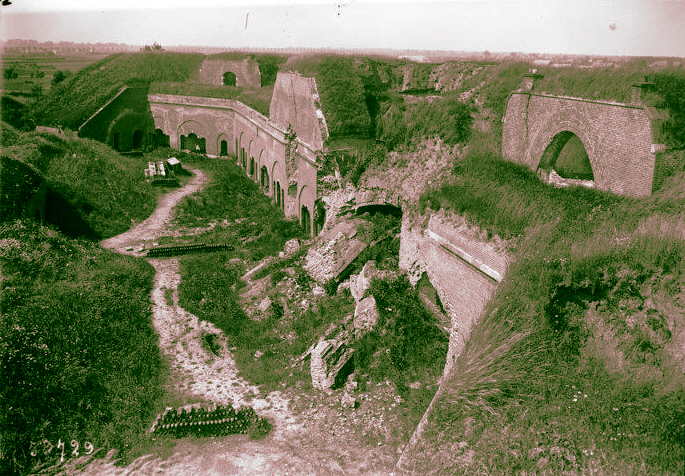
Post World War I Photo: Compare to the Image Above
In the 1930s France invested in the construction of the Maginot Line, which covered the eastern frontiers of France. The frontier with Belgium was regarded as a lesser priority because France's war plan called for the French Army to advance into Belgium and conduct an offensive there. Belatedly, France began construction of a limited series of defenses around Maubeuge in the mid-1930s. These fortifications were individually assaulted and captured in the opening phases of World War II. The Leveau fortifications were attacked on 18 May 1940 and were subdued that afternoon, with one defender dead. In 1944 the fort saw fighting between Resistance and German forces.
Sources: Bibliotheque nationale de France, Fort de Leveau and Remembrance Trails Websites.
|
|
|
Thanks to each and every one of you who has contributed material for this issue. Until April, your editor, Mike Hanlon. |
|
 (Or send it to a friend)
(Or send it to a friend)
|
Design by Shannon Niel
Content © Michael E. Hanlon
|
|
|




